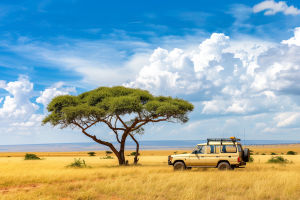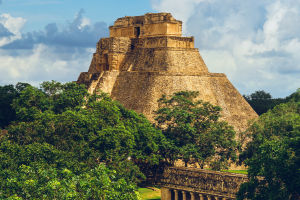The first time you look up at the night sky in Chile's Atacama Desert, it's hard to believe it's real. The stars don't just twinkle—they blaze. Constellations you've only read about suddenly feel close enough to touch. No filter, no telescope needed.
That's how sharp the view is. But what makes this place such a haven for stargazers and astronomers alike?
Whether you're planning a one-night tour or a full astronomy-focused itinerary, this guide breaks down what makes the Atacama sky so special, how to see it for yourself, and what to know before you go.
Why Atacama's Skies Are So Famous
Three things make the Atacama Desert one of the world's best places for stargazing:
1. Altitude: The desert sits at around 8,000 feet (2,400 meters) above sea level. Less atmosphere means less distortion when you're looking at stars.
2. Dryness: Atacama is the driest non-polar desert on Earth. Fewer clouds and nearly zero rainfall translate into clearer nights—over 300 of them a year.
3. Low Light Pollution: Towns like San Pedro de Atacama have strict lighting regulations, and much of the desert remains completely undeveloped.
In fact, it's so ideal that professional observatories like ALMA and Paranal have been built here. But you don't need to be a scientist to enjoy it.
Best Places to Stargaze in Atacama
1. San Pedro de Atacama: This small desert town is the unofficial capital of stargazing in Chile. Most night sky tours depart from here, and local guides know how to make even beginners feel connected to the cosmos.
2. ALMA (Atacama Large Millimeter Array): While ALMA doesn't allow night visits, it offers fascinating daytime tours where you can learn about how astronomers study the origins of stars and galaxies. Tours are free but must be booked in advance.
3. Valley of the Moon (Valle de la Luna): Though best known for sunset views, this Mars-like landscape turns into a magical stargazing site after dark. Just remember—it gets cold fast once the sun sets.
Valley of the Moon
How to Book a Stargazing Tour
Many local operators in San Pedro offer stargazing experiences, ranging from basic naked-eye tours to telescope-assisted sessions with astrophotography included.
• Standard group tour: $30–$45 USD per person.
• Private telescope experience: $90–$150 USD.
• Astrophotography workshops: $200 USD depending on equipment and duration.
Some recommended providers include:
• SpaceObs: One of the longest-running stargazing companies in the region. Their bilingual guides use high-end telescopes and offer practical explanations.
• Astroexperiencias: Combines cultural storytelling with night sky viewing, sometimes with indigenous perspectives on constellations.
When to Go for the Clearest Skies
The Atacama offers excellent stargazing year-round, but certain months are better than others depending on what you want to see.
• March to May: Crisp skies and fewer tourists.
• June to August: Coldest months but often clearest nights.
• September to November: Warmer weather, perfect for outdoor sky photography.
• Avoid full moons: Bright moonlight can wash out the stars, so try to schedule your tour around a new moon phase.
How to Get There
• Fly to Calama Airport (CJC) from Santiago, Chile (2-hour flight).
• Drive or take a shuttle from Calama to San Pedro de Atacama (1.5 hours by road).
• Public transport is available, but for flexibility, many travelers opt for car rentals or guided transfers.
Tips for a Great Stargazing Experience
1. Dress in Layers: Night temperatures drop drastically, even in summer. A down jacket, gloves, and thermal socks are smart additions.
2. Stay Hydrated: High elevation means dry air and quicker dehydration—even at night.
3. Don't Rush: Spend at least 2–3 nights in the region. Your body needs time to adjust to the altitude, and more nights mean better chances to catch perfect conditions.
4. Use a Star App: Apps like Sky Guide or Stellarium can help you navigate constellations before your tour.
What Makes It Truly Memorable
Unlike some dark-sky locations that require long hikes or overnight camping, Atacama makes world-class stargazing accessible. You can eat dinner in town, hop on a short drive into the desert, and be standing under the Milky Way in less than an hour.
But what truly stays with you isn't just the view—it's the feeling. The sheer vastness of the sky, the silence of the desert, the way your guide points out Jupiter and it's right there, unmistakable. It's a rare reminder that we're small, but connected to something impossibly big.
So, what would you want to see first—Saturn's rings, the Southern Cross? If you've ever wanted a front-row seat to the universe, this is it. Would you dare to trade a few city nights for the clearest sky you'll probably ever see?


